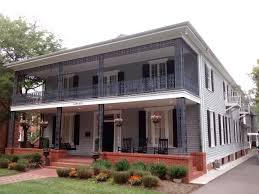Physical Address
304 North Cardinal St.
Dorchester Center, MA 02124
Physical Address
304 North Cardinal St.
Dorchester Center, MA 02124

I think the most useful way to think about NIMBYism is as a neighborhood-centered phenomenon. When people shop for homes, they shop for specific, physical features of a dwelling, of course, but mainly they shop for neighborhoods. The quality of neighborhood amenities — interpreted broadly to include things like school quality and access to the CBD — varies wildly from neighborhood to neighborhood, and thus does the amount people are willing to pay for those amenities. What NIMBYs are really after is limiting access to neighborhood amenities, mostly by limiting the quantity of housing. Neighborhoods (at least the ones empowered politically) do their best to hold housing below the market-clearing quantity. This ensures that the value of neighborhood amenities is capitalized into home prices. Without quantity controls, the “nicest” neighborhoods would be the densest. Instead, thanks to zoning, they’re simply the most expensive. There’s a steep premium for buying into the neighborhood club. Here’s evidence in favor of the “club” theory from L.A. planner C.J. Gabbe. (H/t Urbanize.LA.) Gabbe asks the question, “Where do upzonings and downzonings happen?” To answer it, he looked at how the zoning of each of L.A.’s 780,000 parcels changed between 2002 and 2014, and tallied whether a lot was “upzoned” or “downzoned”, as measured by the change in allowed residential density. The first striking result was how few of the parcels were either upzoned or downzoned: an average of just 225 acres were upzoned and 216 acres downzoned annually between 2002 and 2014. That is, less than two-tenths of one percent of L.A.’s land area was upzoned or downzoned each year. Given the surge in demand for housing in L.A., especially over the last 6 years or so, that’s remarkably little. But the other thing Gabbe documents is that resistance to zoning really does seem to […]

HUD has released 2015 building permit tallies. Austin’s tallies for 2015: Single Family Units: 2,846 Duplex units: 326 Units in 3-4 unit buildings: 30 Units in 5+ unit buildings: 6,890 This bipolar split is typical of American cities. Some cities build more single-family than multi-family. Some build more multi-family than single-family. But the fourplex is dead. We build very little small-scale multi-family these days, which is why the “missing middle” is a focus of zoning code rewrites and a meme among the New Urbanist crowd. Although “missing middle” housing could easily be added to established single-family neighborhoods while preserving “neighborhood character,” it is mostly illegal in Austin and most other American cities, at least within the single-family districts, and it is often staunchly resisted by homeowners in older neighborhoods, where the form of housing makes most sense. Some homeowners, in fact, seem to dislike “missing middle” housing more than any other kind of housing. It is worth thinking about why. It is useful to first think about building technologies. After manufactured housing, the simplest, cheapest housing technology is the low-rise, wood-frame construction used in detached single-family homes. Small apartment buildings can be built using essentially the same techniques. Most large suburban apartment projects, in fact, are developed as a cluster of two-three story buildings containing 8-12 units each. These buildings would actually form nice low-rise, urban neighborhoods if they were arranged around a public street grid, but instead they are arranged around parking lots, private drives and landscaped common areas in garden-style developments. The next step up from low-rise, wood-frame technology is the mid-rise apartment building of four to seven stories. This type of development requires elevators (and thus a concrete elevator core) and usually consists of “stick and brick” construction over a concrete podium. It is at least twice as expensive per square foot as similar quality single-family housing — more if it includes structured […]

Economist Nick Rowe at Worthwhile Canadian Initiative has a provocative piece asking whether housing demand curves might actually slope up. He puts his argument in abstract mathematical terms (again, he’s an economist), but the germ of the idea is that “everybody wants to live near everyone else, wherever that happens to be.” Our decisions about where to live are dependent on what everyone else decides to do. If you move from the countryside to the city, I get more out of moving to the city, too. And vice versa. Our decisions mutually reinforce each other. Rowe assumes that these decisions not only reinforce each other but are “strong strategic complements,” which means roughly that they generate positive feedback. We can think of it in probabilistic terms: if my probability of moving from the countryside to the city is conditioned on your probability of moving, then our decisions are “strong strategic complements” if a 10% increase in your chance of moving increases my chance of moving by morethan 10% (and vice versa). That’s not a completely arbitrary assumption: if you and I live in the countryside, your decision to move not only makes the city a more desirable place (because it now has more people) but it makes the countryside less desirable (it is now a bit lonelier). That is, when you raise your probability of moving, you not only increase my chances of being stranded, you make the consequences of my being stranded more dire. I adjust my probability by ratcheting it up even more. This positive feedback will cause people to continue pouring in from the countryside into the city, at least over some range of population. (Overcrowding, congestion and so forth will dampen the feedback at some point.) Within this population range, increasing the amount of housing further increases the demand for housing. But if the […]